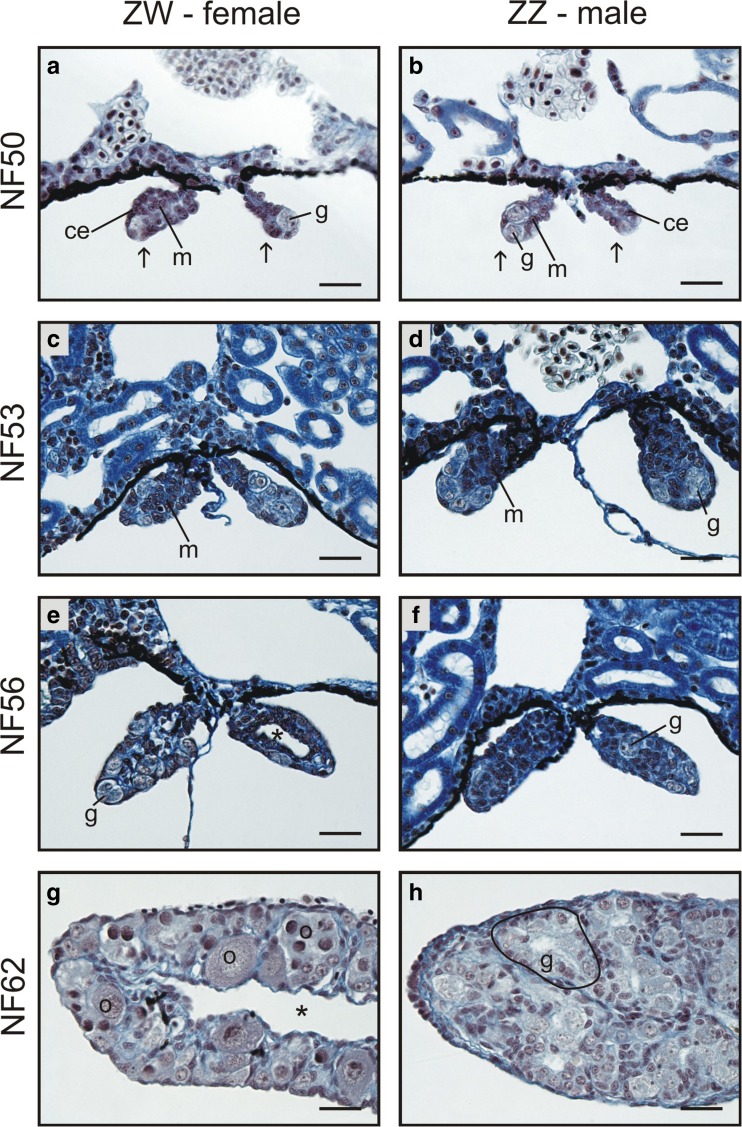Fig. 1.
Structural changes in developing gonads. a, b At stage NF50, there is no difference in the gonad structure between genetic sexes (ZW and ZZ). Such undifferentiated gonads (arrows) are composed of the somatic cells of coelomic epithelium (ce) covering the gonad, and germ cells (g) located inside; the germ cells are attached to the coelomic epithelium. The somatic cells gather in the gonad center forming gonadal medulla (m). At stage NF53, the first sexual differences appear in the gonad structure; in the differentiating ovaries (c, ZW), the germ cells remain in the peripheral position forming the ovarian cortex, whereas the centrally located medulla remains sterile. In the ZZ (male) gonads at the onset of sexual differentiation (d, the onset of the testis differentiation), the germ cells (g) detach from the coelomic epithelium and move towards the gonad center (medulla, m). At stage NF56, the differentiating ovaries (e) becomes compartmentalized into cortex and medulla; all germ cells (g) are located in the cortex and are attached to the coelomic epithelium; an ovarian cavity forms in the medulla (asterisk). In the differentiating testes (f), the germ cells (g) are dispersed and the cortex and medulla are absent. At stage NF62, the ovaries (g) contain large ovarian cavity (asterisk); the ovarian cortex contains meiotic cells (o). In the testes (h), the germ cells (g) are located within the testis cords (encircled). Scale bar, 25 μm

